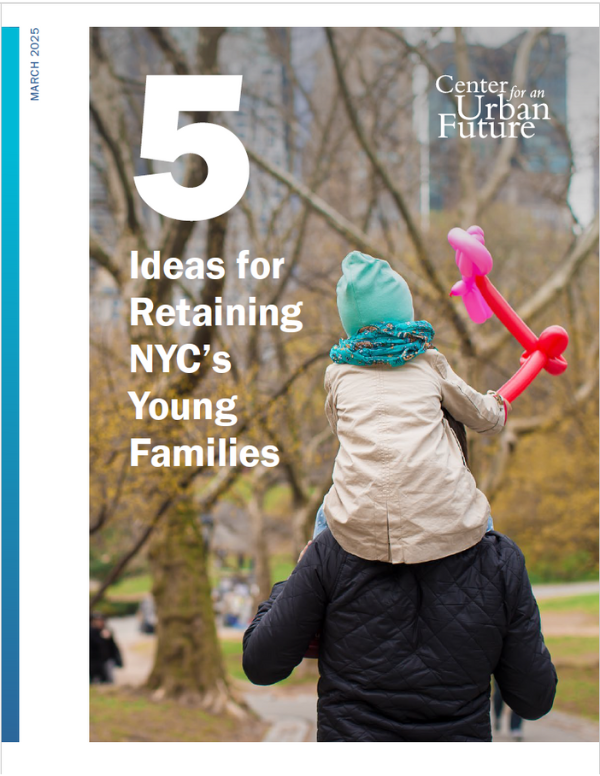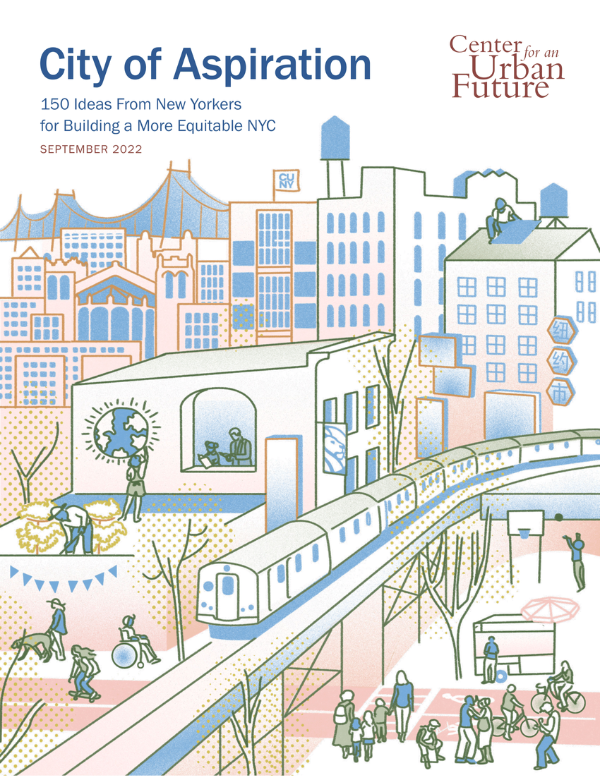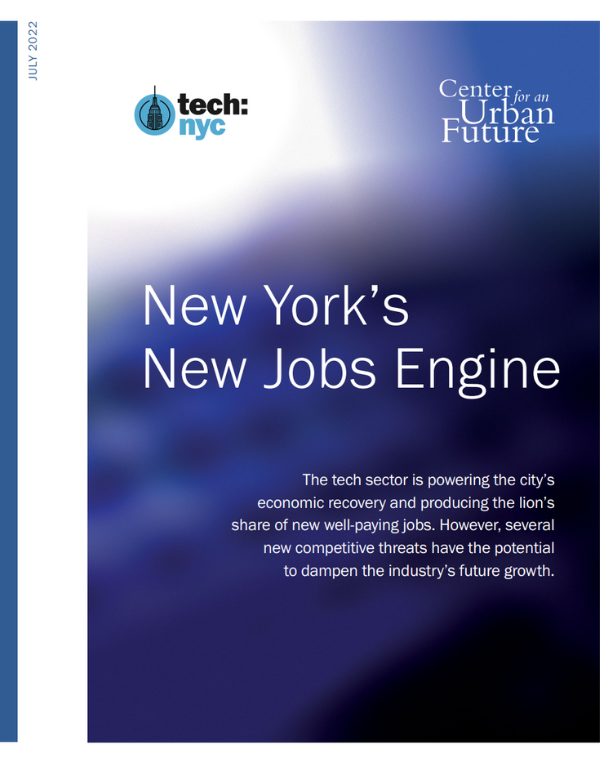The booming tech sector has become New York City’s most reliable new source of high- and middle-wage jobs, adding well over 100,000 jobs in the past decade and far outpacing the growth of other well-paying job generators like finance, advertising, and legal services. To keep this going in the years ahead, New York will need to capture a significant share of the growth expected in a range of emerging tech fields. None will be as important as artificial intelligence, a field that many economic experts believe will be the fastest growing segment of the tech sector in the decade ahead and one of the drivers of economic growth nationally.
In addition to the significant potential for new job creation, AI represents a once-in-a-generation opportunity to vastly improve services provided by city government and its nonprofit partners. And AI-powered tools and services are well-positioned to help address some of New York’s biggest challenges—from housing affordability to climate change.
While New York City has many of the building blocks needed for success in AI, the future of this rapidly changing field is very much up in the air. New York has the clear potential to be one of the globe’s two leading AI hubs, but it’s uncertain whether New York will be able to maximize this opportunity and come out ahead of the global competition. Several other cities, states, and countries are already making big bets on AI, most of
which have several advantages over New York, including significantly lower housing prices (which could help attract AI talent) and, for companies, far lower office rents, electricity bills, labor costs, and taxes.
To maximize New York City’s AI opportunity, city leaders will need a different economic development playbook than has been used in the past. Our research suggests that the city’s nascent AI industry is less responsive than other sectors are to conventional economic development tools, such as property tax abatements and help financing capital projects. Instead, city leaders should launch a set of creative new economic development initiatives and strategies specifically designed to attract and retain AI start-ups and talent.
This new toolkit should leverage the city’s unique assets, including wielding its procurement powers to spark AI innovation and massively unlock access to city data; address the unique needs of AI start-ups by subsidizing the cost of computing power; and bring exceptional AI talent to New York by launching a prestigious fellowship in city government and recruiting the world’s leading AI events to the city for the next five years.
New York’s emerging strength in the AI economy
The good news is that New York City already has strong AI foundation to build on. Companies in New York have attracted 20 percent of all AI venture capital investment, making it a clear #2 nationally, behind only San Francisco (with 40 percent). According to the New York City Economic Development Corporation (NYCEDC), there are currently more than 270 startups in the city that are powered by or innovating with AI/machine learning. Companies like Hugging Face, Runway, Osmo.ai, and Modal are all headquartered here, while others such as Clarifai, Together, and Databricks have a major presence here.
Demand for AI talent in New York City is surging—and leading all other U.S. cities. According to the Center for an Urban Future’s analysis of data from labor-market analytics firm Lightcast, there were 14,448 unique job postings in the five boroughs seeking candidates with specific AI-focused skills from July 2023 to July 2024—up from 10,031 the year before, a 44 percent increase. By comparison, second-ranked San Francisco had just over 9,000 unique AI-related job postings in the same period.
In February, San Francisco-based Open AI—arguably the world’s most well-known AI company—announced that it was opening a major office here. This adds to the already-significant presence of AI research teams in New York at Google, Palantir, and Meta’s FAIR (Fundamental AI Research) office. In addition, the city—and the surrounding region—boasts several cutting-edge university research labs in the AI space, including New York University’s CILVR Lab, Columbia University’s MLx Systems Biology Lab, Princeton’s NLP Group, Cornell Tech, and the Memorial Sloan Kettering Computational & Systems Biology Group. And Governor Hochul launched the Empire AI Consortium, one of the nation’s largest public investments in AI research and computing power. The $400 million initiative, created in collaboration with several New York universities—including Columbia University, NYU, and CUNY—has the potential to give New York a leg up over other states in attracting topflight AI researchers and spurring AI uses that benefit the public good.
Sharpening New York’s competitive edge in AI
In the broader text sector, New York has largely overcome structural disadvantages such as high costs and a chronic housing shortage to become the clear #2 leading tech hub. But especially in today’s economic landscape—in which many tech companies have embraced hybrid work—New York’s continued global leadership is not a given in the AI field. New York City policymakers will need to take aggressive steps to make sure the city builds on its significant assets and solidifies its status as one of the globe’s two leading AI hubs.
Today, the San Francisco Bay Area has staked out a lead position as the epicenter of the first wave of AI companies focused on building core infrastructure for the AI era, including most of the leading large language models and a significant share of the world’s computing capacity. But New York City can capture a major share of the growth in AI 2.0—the phase of development in which business and consumer apps, hardware, and services are developed to enable wide adoption of AI tools and solutions across a broad range of industries, and in the public sector.
Most importantly, city leaders will need to maintain New York’s greatest asset: its status as the world’s most desirable place to live. This will require new investments and zoning changes that support the development of hundreds of thousands of new units of housing, which is key to attracting and retaining the workers, entrepreneurs, and researchers that will power a growing
AI sector; improve the experience of getting around the city by reducing congestion, improving public transit, and expanding micromobility options; and investing in vibrant parks, public spaces, and culture.
However, in addition to bolstering the city’s fundamentals, there are also several specific initiatives
that city leaders can launch to strengthen the city’s position as an AI hub. This report offers five actionable ideas that city policymakers can implement to maximize the city’s opportunity with AI.
They include:
.png)
This report, which was researched and written by the Center for an Urban Future (CUF) and published with support from Fisher Brothers Foundation and Winston C. Fisher, was informed by more than 25 interviews with AI entrepreneurs and experts. It is the second in a series of three CUF reports focused on high-impact policy ideas for helping New York City thrive in the post-pandemic economy.

_300_388_bor1_a4a4a4.png)
.png)




